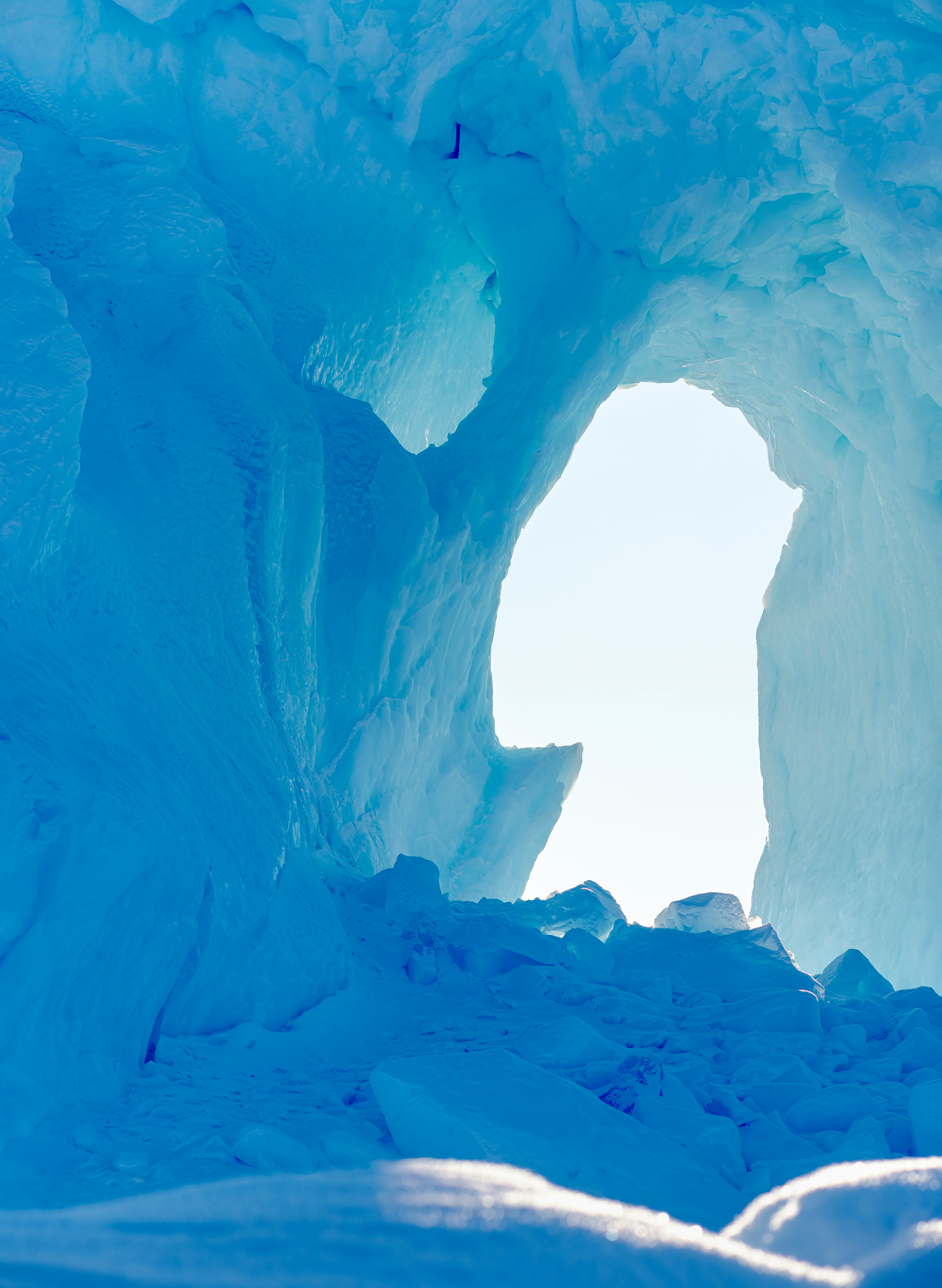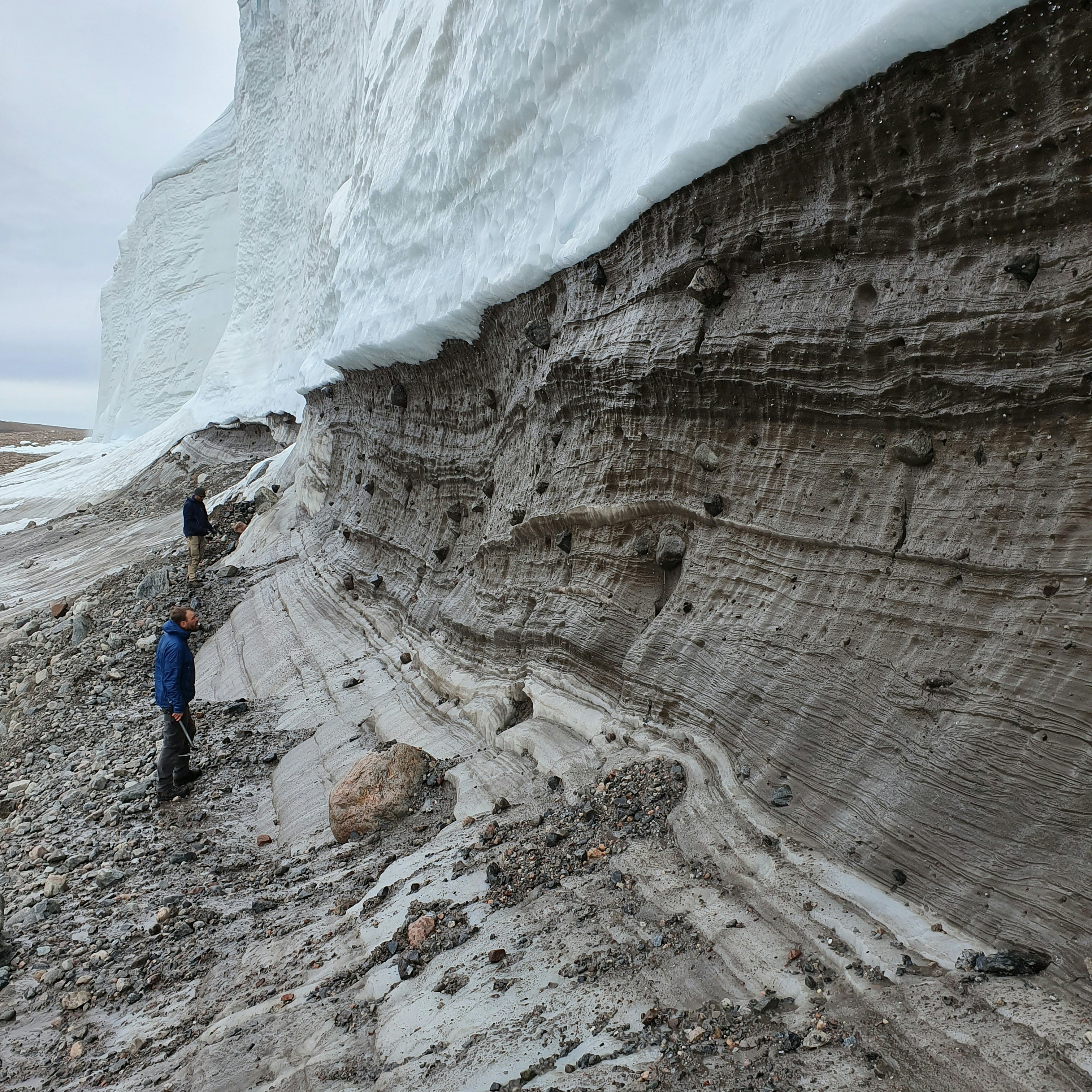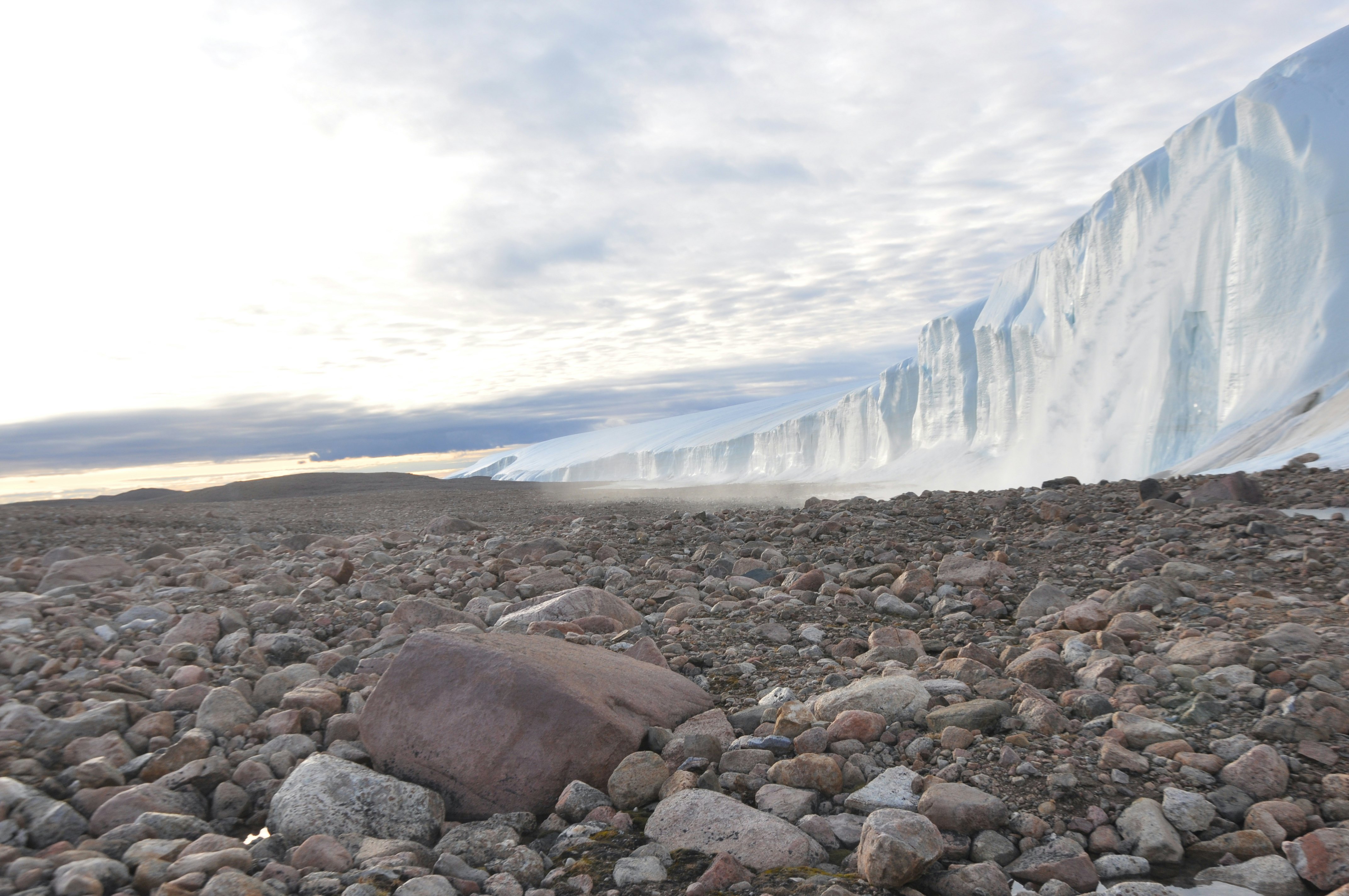
The asteroid believed to have triggered the end of the dinosaurs’ reign over the globe left a 180-kilometer-wide crater and caused massive climate upheaval. So when scientists discovered a gigantic crater almost nine times the width of Manhattan under Greenland’s ice sheet in 2015, they were left with a question: The newly discovered crater appeared to be 31-kilometers wide and relatively recent — made within the last 100,000 years — so was this asteroid impact catastrophic enough to alter the Earth’s climate?
Some scientists went so far as to ask: Did this asteroid trigger the last Ice Age? Now, a new study published this week in Science Advances hints at an unexpected answer.
What’s new — In the study, scientists reveal how zircon crystals and argon gas trapped in rocks and sand found at the impact site, which is called the Hiawatha crater, defied the previous guess at when the asteroid hit. Using lasers and radioactive dating, scientists broke open the sand and rocks to reveal chemical signatures that push the timeline for the impact event back tens of millions of years.
The paper suggests the impact is about 58 million years old — not so young as to potentially have been witnessed by ancient humans during the Younger Dryas, the scientific name for the last Ice Age, as the old theories had suggested.
The new age also puts the Ice Age theory, well... on ice.

“It is fantastic to now know its age. We’ve been working hard to find a way to date the crater since we discovered it seven years ago,” Nicolaj Krog Larsen, a professor at the University of Copenhagen, says in a statement. Larsen is one of the people who discovered the crater in 2015 and a co-author of the new study.
Why it matters — The new date range effectively nixes the idea humans were around to witness this asteroid impact and the neat hypothesis that this asteroid triggered a pivotal climate shift in the history of our species. And while the scientists who first mooted these theories are likely a little disappointed, the discovery offers fresh implications and mysteries to explore.
“Determining the new age of the crater surprised us all. In the future, it will help us investigate the impact’s possible effect on climate during an important epoch of Earth’s history,” says study co-author Gavin Kenny in a statement. Kenny is a researcher at the Swedish Museum of Natural History.

In an interview with Science magazine regarding the new research, one of the co-authors on the study and an associate professor at Purdue University, Brandon Johnson, says:
“It’s probably safe to put the Younger Dryas impact hypothesis back to rest for a while.”
An interesting nugget here is that the asteroid behind the Hiawatha crater fell to Earth not long (in the course of geological time!) after the asteroid that created the Chicxulub crater in Mexico, which occurred some 66 million years ago.
Digging into the details — The Hiawatha crater was discovered in 2015 and revealed to the world in a 2018 paper. Today, it sits one kilometer below the Hiawatha glacier on Greenland. The crater itself is one kilometer deep.
Greenland was very different when the culprit space rock hit Earth 58 million years ago. Ancient animals living there would have enjoyed a pleasant 20 degrees Celsius (about 70 degrees Fahrenheit) and lush forests. Like the Chicxulub impact, the impact event at Greenland would have destroyed the local flora and fauna — but how far-reaching its effects were is still unknown. Chicxulub was so catastrophic as to end an entire era of Earth’s history. Hiawatha is more of a mystery.
The study also puts the Hiawatha asteroid’s impact millions of years before another climate shift in Earth’s early history — the Paleocene-Eocene Thermal Maximum. This event saw a massive rise in the world’s surface temperature for about 100,000 years, starting some 55 million years ago. There is a margin of 1 million years in the new age estimate for Hiawatha, but even taking that into account isn’t enough to link it to the global warming event.
What’s next — The Ice Age theory, or the Younger Dryas Impact theory as some scientists term it, is a nice idea. Still, while some of its proponents are likely down over the new results, they ultimately signify how scientific discovery can lead to unexpected paths years later.
Further, the dating techniques used in this study — lasering sand grains to find argon gas signatures and uranium-dating zircon crystals embedded in rocks — are innovations in themselves. Part of the reason why Hiawatha’s actual age remained a mystery for so long is that it is under a lot of ice — previously, researchers would have had to drill down through the ice and take a sample directly from the crater to date it.
Now, the researchers behind the paper have a firmer grasp of when in the Earth’s geological record the impact occurred it means they can start to tease out what its effects on the globe truly were.
Abstract: The ~31-km-wide Hiawatha structure, located beneath Hiawatha Glacier in northwestern Greenland, has been proposed as an impact structure that may have formed after the Pleistocene inception of the Greenland Ice Sheet. To date the structure, we conducted 40Ar/39Ar analyses on glaciofluvial sand and U-Pb analyses on zircon separated from glaciofluvial pebbles of impact melt rock, all sampled immediately downstream of Hiawatha Glacier. Unshocked zircon in the impact melt rocks dates to ~1915 million years (Ma), consistent with felsic intrusions found in local bedrock. The 40Ar/39Ar data indicate Late Paleocene resetting and shocked zircon dates to 57.99 ± 0.54 Ma, which we interpret as the impact age. Consequently, the Hiawatha impact structure far predates Pleistocene glaciation and is unrelated to either the Paleocene-Eocene Thermal Maximum or flood basalt volcanism in east Greenland. However, it was contemporaneous with the Paleocene Carbon Isotope Maximum, although the impact’s exact paleoenvironmental and climatic significance awaits further investigation.







